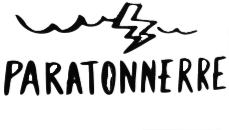« Qu’est-ce la cuisine d’Islande? ». Du poisson séché, du requin conservé (Hàkal), du thym arctique… Le chef cuisinier islandais Gunnar Karl Gíslason, un des signataires du Manifeste pour la nouvelle cuisine nordique, a tous les talents necéssaires pour créer les plats les plus délicieux du monde. Gunnar est également propriétaire du restaurant Dill (aneth) à Reykjavik et tente contente de conserver son héritage viking.
La crise financière de 2018, terrible événement économique et politique en Islande, est arrivée alors que vous veniez d’ouvrir votre restaurant. Est-ce le plus grand défi de votre vie ?
Ce fut en effet une épreuve et cela a beaucoup changé ma conception du restaurant. Evidemment, une crise financière n’est jamais une bonne chose mais je crois vraiment que cela a donné un aspect positif à « Dill ». C’est même devenu un meilleur restaurant.
.
.

Vous avez également ouvert votre restaurant “Dill” dans le but de mélanger les traditions et l’histoire de l’Islande. Est-ce la principale raison de votre aide aux producteurs locaux qui récoltent le sel, les œufs d’oiseaux marins ?
Eh bien obtenir les meilleurs produits ne peut pas se faire sans les locaux. Je voulais rencontrer toutes ces personnes, créer du lien avec eux. Certains sont même devenus de très bons amis.
Quelles sont les caractéristiques et saveurs les plus importantes dans la cuisine islandaise ?
Tout repose sur la saveur d’un poisson pêché il y a peu, sur le goût d’un agneau des collines couvert de thym arctique, d’un poisson fumé avec un peu d’agneau, du poisson séché ou encore du requin fermenté.
Vous preparez vos repas avec une recherche minitieuse des traditions culinaires perdues pour ensuite innover. Vous sentez-vous comme un historien ?
Hahaha non je ne me crois pas aussi sérieux.
Vous avez étudié la gastronomie française. Cela reste une source d’inspiration?
Oui bien sûr mais c’est compilé avec plein d’autres choses.
Vous êtes à présent chef dans un restaurant à New York. Qu’est-ce que vous ressentez lorsque vous apportez la cuisine nordique en Amérique?
.
.
Je n’amène pas notre nourriture. Uniquement les idées et nos traditions. C’est un grand voyage mais biensûr les Islandais me manquent beaucoup.
.
.

Qu’est-ce que vous préférez le plus en tant que chef?
C’est un job avec des opportunités infinies et une grande liberté. Je rencontre constamment de nouvelles personnes et parfois de grandes amitiés naissent. C’est vraiment le meilleur pour moi.
RECETTE:
Soupe de ragoût d’agneau (« C’est quelque chose que j’adore cuisiner chez moi lors des jours froids d’Hiver)
Pour 4 à 6 personnes
1 kg de filet d’agneau avec le gras et l’os (mon grand-père disait que plus c’était gras mieux c’était- je suis d’accord)
3 cuillères à souple d’huile de colza.
3 litres d’eau.
100 gr d’orge.
1 oignon émincé.
4 gousses d’ail émincées.
2 carottes émincés.
2 poireaux émincés.
½ petit rutabaga pelé et émincé.
3 pommes de terre pelées et émincées.
¼ chou fleur émincé.
Sel.
Thym.
Feuilles de laurier.
Romarin.
Persil.
Faire frire l’agneau au four avec une température moyenne. Ajouter l’eau jusqu’à ce que cela couvre l’agneau. Laisser bouillir et mijoter pendant environ 40 minutes puis ajouter l’orge et continuer à faire mijoter pendant encore 40 minutes. Ajouter tous les légumes et herbes et continuer à faire mijoter la soupe pendant environ 30 minutes ou jusqu’à ce que les légumes et la viande deviennent tendres. A servir avec du pain frais, du beurre et de la bière.
Photos des plats: Evan Sung
« What exactly is Icelandic food? ». Dried fish, putrefied shark (Hàkal), arctic thyme,… The Icelandic Chef Gunnar Karl Gíslason, one of the signatories of the 2004 Manifesto for the New Nordic Kitchen, has conquered the skills needed to create some of the most delicious foods in the world. Gunnar owns the restaurant Dill in Reykjavik and goes to great lengths to evoke his Viking heritage.
– The 2008 Icelandic financial crisis was a major economic and political event in Iceland and you just opened your restaurant during that time. Was it the biggest challenge of your life?
It was really challenging and it most definitely changed the whole idea behind the restaurant. Obviously, a financial crisis is never a good thing but I strongly believe it did a good thing for Dill and that Dill is a better restaurant because of it.

– You also wanted to open a restaurant ‘Dill’ that works with the traditions and the history of Iceland. Is it the main reason you help the local producers that provide the salt, that harvesting bird eggs off the coast of Iceland?
Well it´s all about finding local ingredients and you don’t really do that without the locals do you. I wanted to make strong relationship with those people, a lot of them are now dear friends.
– What are the predominant flavours and textures of the Icelandic food?
Everything from the pure flavour of a freshly caught fish, the almost wild lamb from the hills covered in artic thyme to the preserved ingredients like fish smoked with lamb dirt, winter dried fish or our fermented shark.
– You prepare food on the old way, sometimes even forgotten by the locals. Is it an endless quest to seek out lost traditions and transforming them into something new? Do you sometimes feel as a historian?
Hahaha no I don’t take myself that seriously.
– You studied the classical French kitchen. Is it still a source of inspiration?
Yes of course it is… but now mixed with so many other things.
– You’re now an executive chef in a New York restaurant. How does it feel to bring Nordic food overseas?
Well I did not bring our food, only our ideas and traditions our roots so to say. It´s been a great journey so far but of course I really miss my people.

– What do you enjoy the most about being a chef?
It´s a job with endless opportunities and freedom. Meeting new people all the time is a big part of this job as well and sometimes that ends up in great friendship, that’s the best.
RECIPE:
Lamb meat soup/stew (classic) [« This is something that I love to cook at home on a cold winter day »]
For 4-6
1 kg lamb loin, fat and bone on (my grandfather used to say the fatter the better, I agree).
3 tablespoon canola oil.
3 l water (approximately).
100 gr barley.
1 medium with onium, chopped.
4 cloves garlic, chopped.
2 medium carrots, chopped.
2 leeks, chopped.
½ small rutabagas, peeled and chopped.
3 potatoes, peeled and chopped.
¼ cabbage chopped.
Salt.
Thyme.
Bay leaves.
Rosemarie.
Parsley.
Fry the lamb golden brown over medium heat. Add water so it covers the lamb nicely bring to boiling point and simmer for about 40 minutes then add the barley and keep simmering for another 40 minutes. Add all the vegetables and herbs and keep simmering the soup for another half hour or until both the vegetables and meat is soft. Best served with freshly baked bread, butter and beer.
Meal photos by Evan Sung







